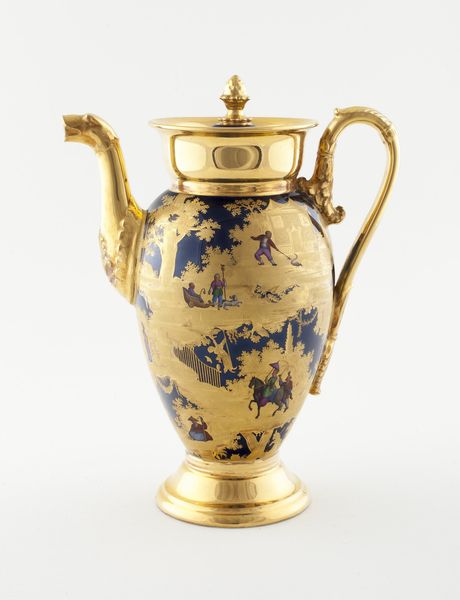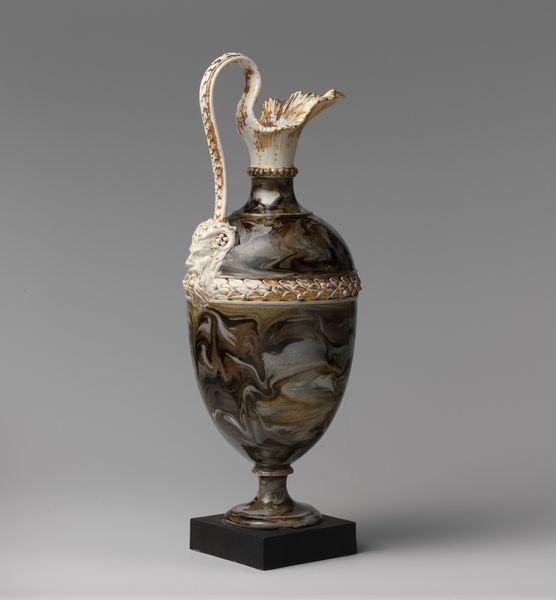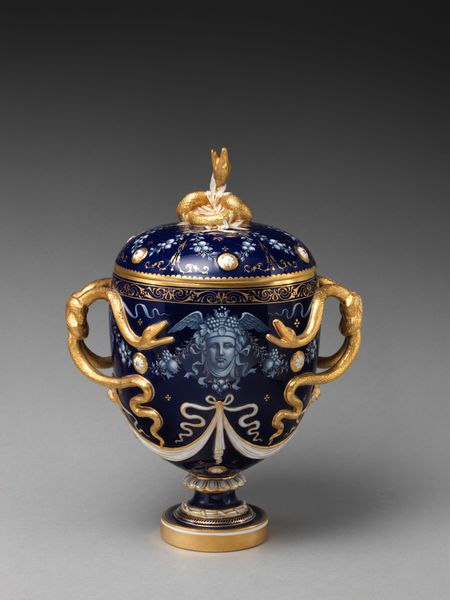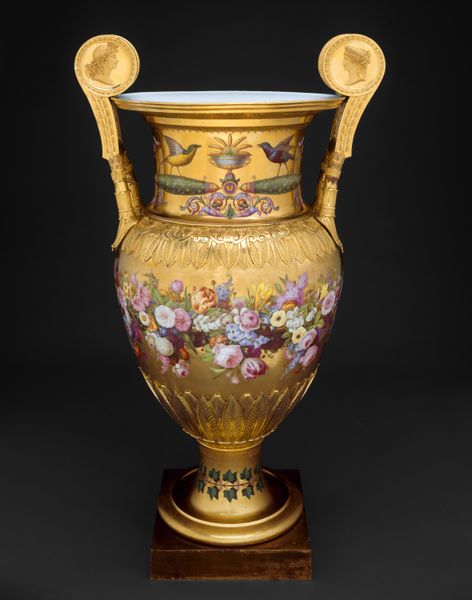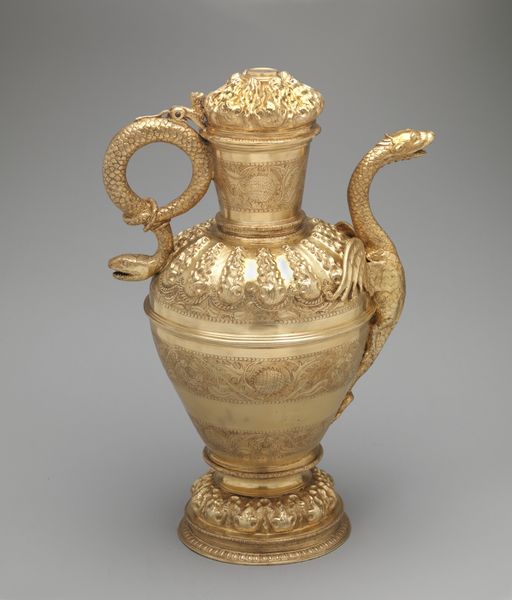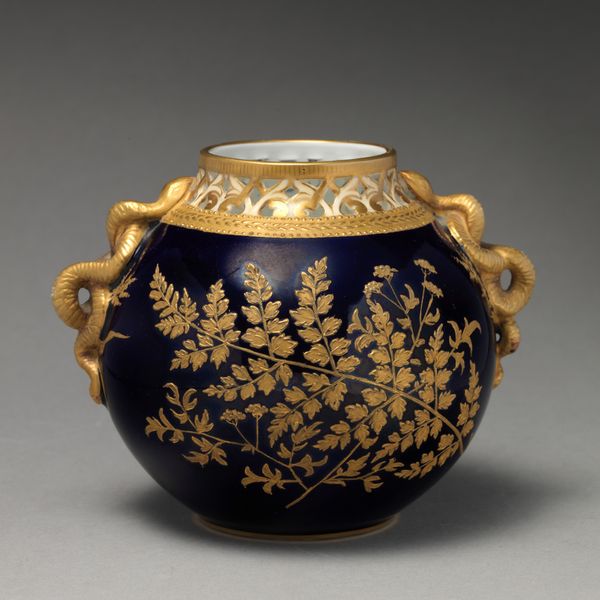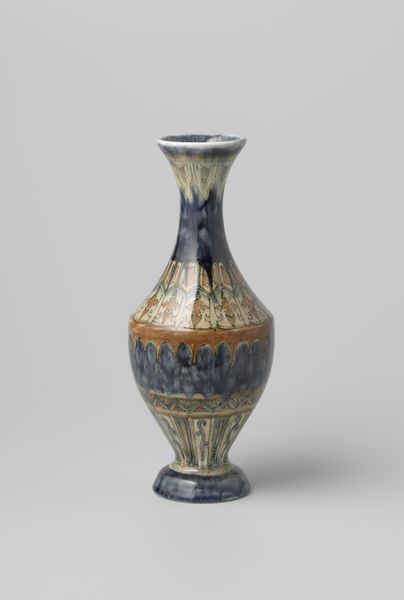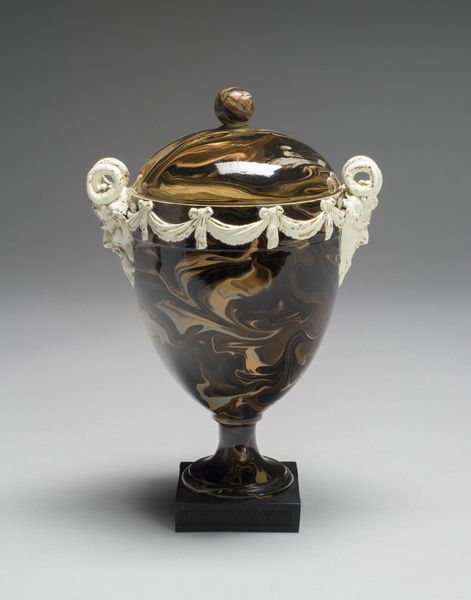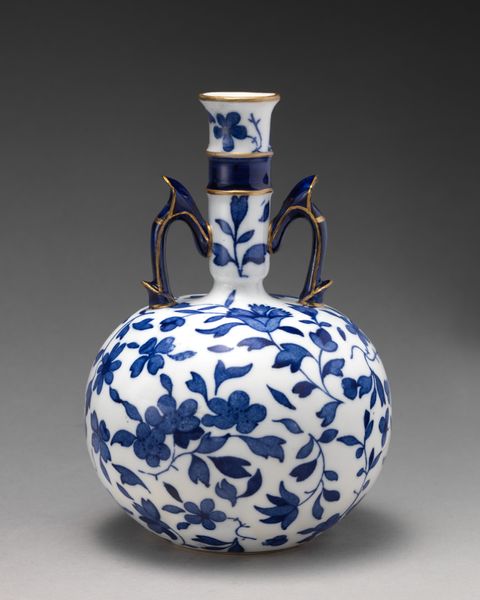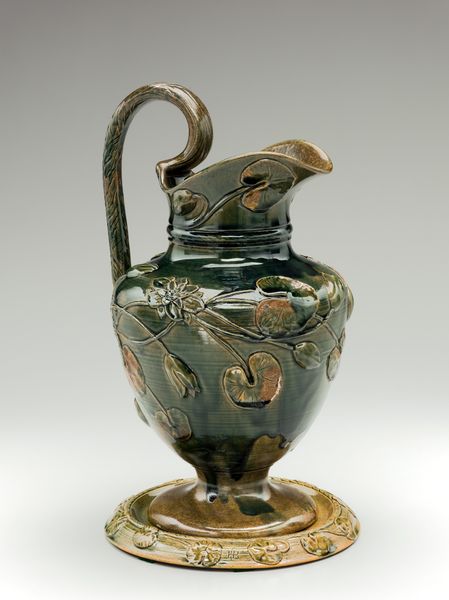
ceramic, porcelain
#
ceramic
#
porcelain
#
decorative-art
#
rococo
Dimensions: H. 16.2 cm (6 3/8 in.)
Copyright: Public Domain
Curator: This porcelain vase, crafted around 1770 by the Manufacture nationale de Sèvres, is a splendid example of Rococo design, currently residing at The Art Institute of Chicago. Editor: It immediately strikes me as… weighty. The dark cobalt blue, contrasted with the opulence of the gold, speaks of formal grandeur. It's less airy than I might expect from Rococo. Curator: Indeed. Sèvres porcelain, renowned for its soft-paste formula and vibrant colors, attained great prestige. Its production involved meticulous labor divisions. The paste-makers, the painters, the gilders… Editor: Which are all invisible in the final presentation. How many artisans handled this single piece? I'm fascinated by the contrast between the precious materials, presumably destined for aristocratic settings, and the hands involved in bringing this object to fruition. What were their working conditions, their level of skill, their place in society? Curator: The gilded laurel leaves climbing the vase act as framing devices. Their sinuous, asymmetrical forms contribute to the overall Rococo aesthetic—emphasizing movement, delicacy, and natural motifs. Semiotically, the laurel represents victory and triumph. Editor: It feels almost… fetishized? The intense glaze reflects light, emphasizing its physical form and creating this highly idealized vessel. And gold – an excellent reflector of radiant heat - could this gilding have actually cooled one’s hands in times without HVAC? Curator: I see what you mean, regarding the materials' capacity beyond mere display. Ultimately, its elegant curves, harmonious color palette, and meticulous craftsmanship, all contribute to the creation of an object meant for both admiration and functional use within a specific social milieu. Editor: Precisely. Exploring these elements allows us to challenge the traditional high art versus craft paradigm, focusing on both labor and historical context. Curator: I’ll look at the artwork structure for symbolic context going forward. Thank you.
Comments
No comments
Be the first to comment and join the conversation on the ultimate creative platform.
